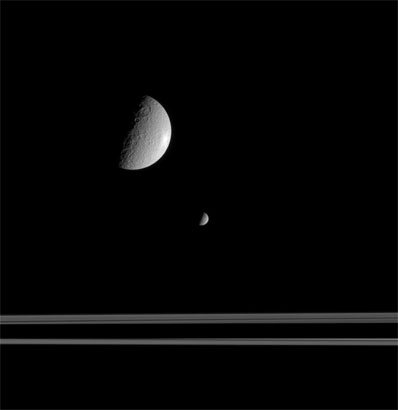
Spaceflight Now +

|

|

|

|

Premium video content for our Spaceflight Now Plus subscribers.

Tracking hurricanes
 This 2005 Atlantic hurricane season has a been a record-breaker. Satellite imagery since June 1 has been compiled into this movie to track the 21 named storms as they formed and traveled, many making landfall. This 2005 Atlantic hurricane season has a been a record-breaker. Satellite imagery since June 1 has been compiled into this movie to track the 21 named storms as they formed and traveled, many making landfall.

 Play video Play video

Hurricane Wilma
 International Space Station cameras captured this incredible video of Hurricane Wilma and its well-defined eye from an altitude of 220 miles. Wilma was packing winds of 175 miles an hour as a Category 5 storm when the station flew overhead. International Space Station cameras captured this incredible video of Hurricane Wilma and its well-defined eye from an altitude of 220 miles. Wilma was packing winds of 175 miles an hour as a Category 5 storm when the station flew overhead.

 Play video Play video

The final Titan
 America's Titan rocket makes its final launch, blasting off from California's Vandenberg Air Force Base to haul a top-secret reconnaissance satellite into orbit. America's Titan rocket makes its final launch, blasting off from California's Vandenberg Air Force Base to haul a top-secret reconnaissance satellite into orbit.

 Play video Play video

Hubble examines moon
 NASA has used the Hubble Space Telescope for scientific observations of the Earth's moon in the search for important oxygen-bearing minerals -- potential resources for human exploration. Scientists held this news conference on October 19 to discuss their investigations. NASA has used the Hubble Space Telescope for scientific observations of the Earth's moon in the search for important oxygen-bearing minerals -- potential resources for human exploration. Scientists held this news conference on October 19 to discuss their investigations.

 Play video Play video

Saturn's spongy moon
 Stunning images of Saturn's moon Hyperion taken by the Cassini spacecraft show a surface dotted with craters and modified by some process, not yet understood, to create a strange, "spongy" appearance, unlike the surface of any other moon around the ringed planet. Stunning images of Saturn's moon Hyperion taken by the Cassini spacecraft show a surface dotted with craters and modified by some process, not yet understood, to create a strange, "spongy" appearance, unlike the surface of any other moon around the ringed planet.

 Play video Play video

 Become a subscriber Become a subscriber
 More video More video

|

|

|

|
|

|

Confusing perspective of Saturn's moons from Cassini
CASSINI PHOTO RELEASE
Posted: October 25, 2005

Credit: NASA/JPL/Space Science Institute
Download larger image version here
|
The Saturn moon Mimas is much smaller than Rhea, but the geometry of this scene from the Cassini spacecraft exaggerates the actual differences in size. Here, Mimas is on the opposite side of the rings from Rhea and Cassini. Mimas' diameter is 397 kilometers (247 miles), while Rhea's diameter is 1,528 kilometers (949 miles).
Saturn's shadow slices across the ringplane here. The view looks toward the Saturn-facing hemisphere on Mimas, and the anti-Saturn hemisphere on Rhea.
The image was taken in visible light with the narrow-angle camera from a distance of approximately 1.5 million kilometers (900,000 miles) from Rhea. Mimas was located on the far side of the rings, about 670,000 kilometers (420,000 miles) farther from Cassini. The image scale is 9 kilometers (6 miles) per pixel on Rhea and 13 kilometers (8 miles) per pixel on Mimas.
The Cassini-Huygens mission is a cooperative project of NASA, the European Space Agency and the Italian Space Agency. The Jet Propulsion Laboratory, a division of the California Institute of Technology in Pasadena, manages the mission for NASA's Science Mission Directorate, Washington, D.C. The Cassini orbiter and its two onboard cameras were designed, developed and assembled at JPL. The imaging operations center is based at the Space Science Institute in Boulder, Colo.
|

|

|

|

|



